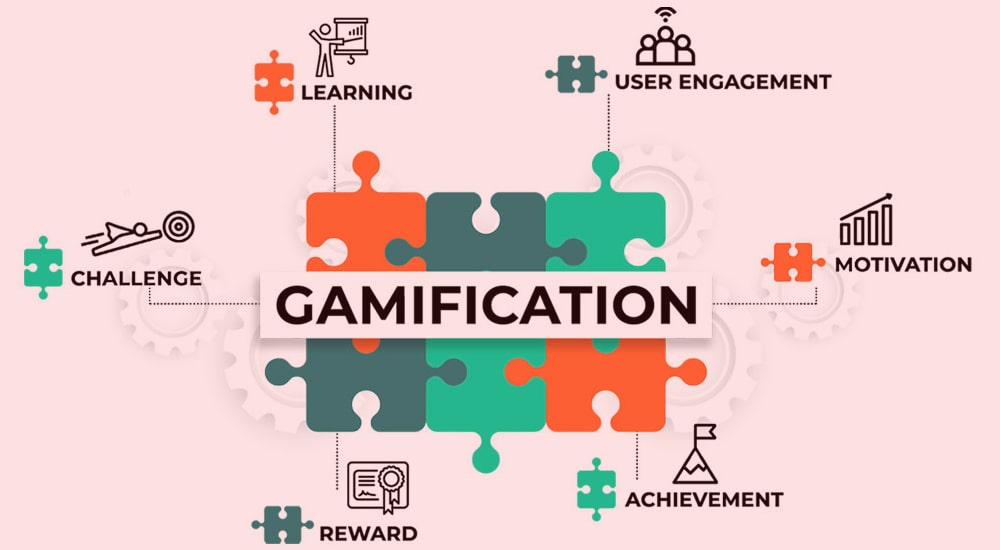
ntegrating gamification with microlearning has emerged as a powerful strategy for boosting learner engagement and retention. By combining concise, focused microlearning modules with game-like elements, organizations can create a dynamic and motivating learning experience. Gamification transforms routine training into an engaging process, making learners more inclined to participate and absorb knowledge effectively. Here’s a closer look at how to maximize engagement by crafting microlearning experiences with gamification.
What Is Gamification?
To “gamify” something means to integrate game elements into non-game environments, creating more enjoyable and stimulating experiences. For instance, Gamified Learning Platforms add elements like points, levels, rewards, and challenges to training modules. When applied to microlearning, gamification provides a clear path toward both engagement and achievement, helping learners stay focused on their objectives.
Gamification’s benefits in learning are especially impactful in professional settings. Gamification in the workplace fosters continuous learning and encourages employees to engage with training materials regularly, which is often challenging with traditional methods.
Key Elements of Gamification in Microlearning
1. Gamified Challenges and Rewards : Challenges and rewards are core gamification features that keep learners motivated. By including quizzes, knowledge tests, or simulations in a microlearning module, learners have tangible milestones to strive for. For each successful completion, learners might earn points or unlock rewards, motivating them to continue. Gamified learning apps and platforms often integrate these features seamlessly, making it easy for learners to track progress and celebrate achievements.
2. Real-Time Feedback : Instant feedback is a crucial gamification technique that helps learners understand their performance. For example, if a learner completes a module quiz correctly, they receive points and progress to the next level; if not, they’re encouraged to try again. This feature enhances learning by reinforcing correct answers while providing a safe space to learn from mistakes.
3. Personalized Learning Paths : Offering choices within learning paths allows for a sense of autonomy. When learners can choose which microlearning module to tackle first or which challenge to attempt, they feel more in control of their learning journey. This type of gamification solution taps into the autonomy and preference-driven aspects of learning, leading to greater personal investment in the material.
Gamification Techniques That Work in Microlearning
Integrating gamification effectively into microlearning means choosing techniques that align with the short, focused nature of microlearning content. Below are a few strategies:
- Badges and Certifications: Learners earn badges for completing modules or achieving specific goals. Badges create a sense of accomplishment and can be displayed as markers of achievement.
- Leaderboards: Leaderboards encourage healthy competition. While commonly seen in gamified learning apps, they are particularly effective in workplaces where employees are motivated by friendly competition.
- Leveling Up: By dividing training content into levels, learners have a clear sense of progression. Moving up levels as they complete microlearning tasks provides a tangible sense of achievement.
Benefits of Gamified Microlearning for the Workplace
Gamification in the workplace brings a range of benefits, including higher completion rates and better knowledge retention. When learning is structured as a series of small, engaging tasks with rewards and challenges, employees are more likely to participate and stay engaged over time.
For example, in compliance training, often seen as tedious, gamification can transform the experience. Learners can engage with scenarios, solve puzzles, or complete challenges, all while understanding compliance rules. Gamification training keeps the material interesting and ensures the concepts are better retained.
Choosing the Right Gamification Platform
Finding the right gamified training platform is crucial to implementing gamified microlearning effectively. Look for gamification software that offers a flexible, customizable interface and supports gamification elements like rewards, badges, and progress tracking. Many gamification apps are tailored specifically for training purposes, making it easy to integrate these features into your microlearning strategy.
Practical Tips for Crafting Gamified Microlearning Content
- Set Clear Objectives: Define what each microlearning module aims to achieve, and align gamified elements with these goals. Whether the focus is skill-building or knowledge retention, choose gamification features that support these objectives.
- Leverage Gamification Resources: Consult gamification resources to stay updated on the latest trends and techniques. The more innovative your approach, the more likely learners will find the material engaging.
- Monitor and Adapt: Use analytics to track which gamified elements are most effective. This data can guide you in fine-tuning your gamified microlearning content.
Final Thoughts
Gamification is more than just adding points and badges—it’s about creating an engaging, learner-centered experience. By blending Gamification Techniques with the focused structure of microlearning, organizations can foster an interactive learning environment that keeps employees engaged, motivated, and driven to succeed.
For organizations looking to modernize training, crafting gamified microlearning modules is an effective step forward. MaxLearn’s expertise in creating impactful, gamified learning platforms can support you in building training programs that not only educate but also inspire. Unlock the power of gamified microlearning today and set the stage for a motivated, high-performing team.





